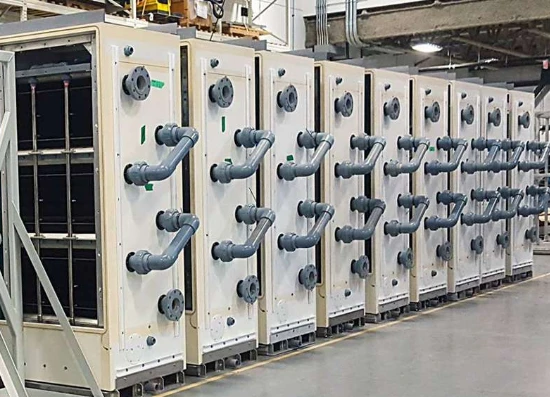
-
 Afrikaans
Afrikaans -
 Albanian
Albanian -
 Amharic
Amharic -
 Arabic
Arabic -
 Armenian
Armenian -
 Azerbaijani
Azerbaijani -
 Basque
Basque -
 Belarusian
Belarusian -
 Bengali
Bengali -
 Bosnian
Bosnian -
 Bulgarian
Bulgarian -
 Catalan
Catalan -
 Cebuano
Cebuano -
 China
China -
 China (Taiwan)
China (Taiwan) -
 Corsican
Corsican -
 Croatian
Croatian -
 Czech
Czech -
 Danish
Danish -
 Dutch
Dutch -
 English
English -
 Esperanto
Esperanto -
 Estonian
Estonian -
 Finnish
Finnish -
 French
French -
 Frisian
Frisian -
 Galician
Galician -
 Georgian
Georgian -
 German
German -
 Greek
Greek -
 Gujarati
Gujarati -
 Haitian Creole
Haitian Creole -
 hausa
hausa -
 hawaiian
hawaiian -
 Hebrew
Hebrew -
 Hindi
Hindi -
 Miao
Miao -
 Hungarian
Hungarian -
 Icelandic
Icelandic -
 igbo
igbo -
 Indonesian
Indonesian -
 irish
irish -
 Italian
Italian -
 Japanese
Japanese -
 Javanese
Javanese -
 Kannada
Kannada -
 kazakh
kazakh -
 Khmer
Khmer -
 Rwandese
Rwandese -
 Korean
Korean -
 Kurdish
Kurdish -
 Kyrgyz
Kyrgyz -
 Lao
Lao -
 Latin
Latin -
 Latvian
Latvian -
 Lithuanian
Lithuanian -
 Luxembourgish
Luxembourgish -
 Macedonian
Macedonian -
 Malgashi
Malgashi -
 Malay
Malay -
 Malayalam
Malayalam -
 Maltese
Maltese -
 Maori
Maori -
 Marathi
Marathi -
 Mongolian
Mongolian -
 Myanmar
Myanmar -
 Nepali
Nepali -
 Norwegian
Norwegian -
 Norwegian
Norwegian -
 Occitan
Occitan -
 Pashto
Pashto -
 Persian
Persian -
 Polish
Polish -
 Portuguese
Portuguese -
 Punjabi
Punjabi -
 Romanian
Romanian -
 Russian
Russian -
 Samoan
Samoan -
 Scottish Gaelic
Scottish Gaelic -
 Serbian
Serbian -
 Sesotho
Sesotho -
 Shona
Shona -
 Sindhi
Sindhi -
 Sinhala
Sinhala -
 Slovak
Slovak -
 Slovenian
Slovenian -
 Somali
Somali -
 Spanish
Spanish -
 Sundanese
Sundanese -
 Swahili
Swahili -
 Swedish
Swedish -
 Tagalog
Tagalog -
 Tajik
Tajik -
 Tamil
Tamil -
 Tatar
Tatar -
 Telugu
Telugu -
 Thai
Thai -
 Turkish
Turkish -
 Turkmen
Turkmen -
 Ukrainian
Ukrainian -
 Urdu
Urdu -
 Uighur
Uighur -
 Uzbek
Uzbek -
 Vietnamese
Vietnamese -
 Welsh
Welsh -
 Bantu
Bantu -
 Yiddish
Yiddish -
 Yoruba
Yoruba -
 Zulu
Zulu
Innovative Solutions for FRP Flange Applications in Modern Construction Engineering
Understanding FRP Flanges A Comprehensive Guide
In the ever-evolving world of industrial materials, Fiber Reinforced Polymer (FRP) has emerged as a revolutionary substance, particularly in the manufacturing of flanges. FRP flanges are rapidly gaining traction in various industries, including oil and gas, wastewater treatment, and chemical processing due to their numerous benefits. This article aims to elucidate the significance, advantages, and applications of FRP flanges.
What is FRP?
Fiber Reinforced Polymer (FRP) is a composite material made of a polymer matrix reinforced with fibers, typically glass, carbon, or aramid. This combination creates a material that is incredibly strong yet lightweight, resistant to corrosive chemicals, and has excellent fatigue performance. These characteristics make FRP an optimal choice for applications that subject materials to harsh conditions.
The Importance of Flanges
Flanges are critical components used to connect pipes, valves, and other equipment in various systems. They provide mechanical strength and ensure a tight seal to prevent leaks. Proper flange design and material selection are crucial to the safety and efficiency of many industrial operations. Traditionally, flanges are made from metals like stainless steel or carbon steel. However, the introduction of FRP has brought a new dimension to flange technology.
Advantages of FRP Flanges
1. Corrosion Resistance One of the foremost advantages of FRP flanges is their exceptional resistance to corrosion. Unlike metal flanges that can rust or corrode when exposed to moisture or corrosive substances, FRP flanges maintain their integrity over time. This characteristic is particularly valuable in applications involving aggressive chemicals, making FRP flanges an ideal choice for chemical plants.
2. Lightweight FRP flanges are significantly lighter than their metal counterparts. This reduction in weight can lead to easier handling and installation, as well as reduced transportation costs. The lightweight nature of FRP also alleviates stress on structural supports and other components of the system.
frp flange

3. Durability The inherent durability of FRP materials leads to a longer lifespan for flanges, reducing the frequency of replacements. This longevity translates into lower maintenance costs and less downtime, making FRP flanges a cost-effective solution in the long run.
4. Thermal Stability FRP flanges can withstand high temperatures without losing structural integrity. This makes them suitable for applications in industries where heat resistance is paramount.
5. Customization FRP manufacturing processes allow for easy customization of flange sizes, shapes, and integration with other components. This adaptability can be advantageous in unique system designs that require specialized solutions.
Applications of FRP Flanges
FRP flanges are utilized across various industries due to their superior properties. In the oil and gas sector, they are employed in piping systems associated with the transmission of corrosive fluids. In wastewater treatment facilities, FRP flanges help create robust connections in environments laden with humidity and chemical agents. Additionally, chemical processing plants benefit from FRP’s corrosion resistance, enhancing the longevity and reliability of their equipment.
Conclusion
As industries continue to seek solutions that enhance performance while minimizing maintenance costs, FRP flanges offer a compelling alternative to traditional metal components. Their corrosion resistance, lightweight nature, durability, thermal stability, and customizability make them a versatile choice for various applications. Understanding the potential of FRP flanges can empower businesses to make informed decisions that boost operational efficiency and safety.
In summary, as we move into an era where sustainability and efficiency are paramount, the adoption of advanced materials like Fiber Reinforced Polymer could very well define the future of industrial applications. Embracing FRP technology will not only lead to improved performance but also contribute to a more sustainable industrial landscape.









